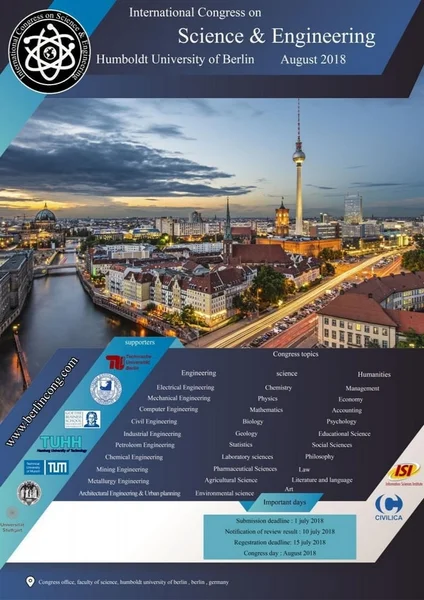-
generalized transform technique for fluid-structural interaction during water hammer
جزئیات بیشتر مقاله- تاریخ ارائه: 1397/05/28
- تاریخ انتشار در تی پی بین: 1397/05/28
- تعداد بازدید: 476
- تعداد پرسش و پاسخ ها: 0
- شماره تماس دبیرخانه رویداد: -
unsteady flow in pipes may appear in certain circumstances and may cause undesired effects in industrial processes. the objective of this paper is to develop a new simulation model for the fluid–structure interactions (fsi) that occur in pipeline systems during water hammer. the mathematical formulation is based on water hammer equations, traditionally used in the literature, coupled with a standard beam formulation for the structure and implementing the generalized integral transform technique, gitt to treat the set of equations. the solution method is applied to a straight pipeline system subjected to axial impact load by a rapid valve closure and axial vibration of pipe, pressure and velocity of fluid are investigated. in the first step, the set of governing partial differential equations is transformed into a set of second-order differential equations in dimensionless form. in the second step the ideas in gitt approach to construct a hybrid analytical-numerical solution are implemented to obtain dynamic response of fsi during water hammer. by adopting a fourth-order eigenvalue problems and proposing eigenfunction expansions the transformed functions system results in the form of initial value problems. the explicit fourth-order runge-kutta and the implicit adams-bashforth-moulton scheme are used to treat the set of obtained coupled ordinary differential initial value problems. following the evaluation of time dependent variables, the analytical inversion formulas are recalled to recover the dimensionless functions for the velocity of fluid, the pressure and the axial displacement of the wall of pipe, v(x,t), p(x,t) and u(x,t). to illustrate the capability and efficiency of the proposed scheme, delft hydraulic benchmark (dhb) problem b is chosen to show the performance of the methodology. furthermore, the convergences behavior of solution is examined for increasing truncation orders and a perfect convergence is observed.
مقالات جدیدترین رویدادها
-
استفاده از تحلیل اهمیت-عملکرد در ارائه الگوی مدیریت خلاقیت سازمانی و ارائه راهکار جهت بهبود
-
بررسی تاثیر ارزش وجوه نقد مازاد بر ساختار سرمایه شرکت های پذیرفته شده در بورس اوراق بهادار تهران
-
بررسی تأثیر سطح افشای ریسک بر قرارداد بدهی شرکت های پذیرفته شده در بورس اوراق بهادار تهران
-
بررسی تأثیر رتبه بندی اعتباری مبتنی بر مدل امتیاز بازار نوظهور بر نقد شوندگی سهام با تأکید بر خصوصی سازی شرکت ها
-
تأثیر آمیخته بازاریابی پوشاک ایرانی بر تصویر ذهنی مشتری پوشاک ایرانی (هاکوپیان)
-
تاثیر استفاده از پروبیوتیک و فایتوبیوتیک بر بهداشت و ضخامت پوسته تخم مرغ
-
استفاده از داده های ماهواره irs-1d جهت استخراج نقشه کاربری اراضی (مطالعه موردی حوزه آبخیز مندرجان اصفهان)
-
ارزیابی کلینیکی یک ساله ترمیم های آمالگام کلاس ii
-
بررسی رفتار ستونهای ناودانی با سخت کننده های مورب کناری تحت بارگذاری فشاری با استفاده از نرم افزار ansys
-
تعیین عوامل موثر بر انتخاب مدهای حمل و نقل در جابجایی کالا با استفاده از مدل انتخاب گسسته لاجیت (مطالعه موردی: بندر شهید رجایی)
مقالات جدیدترین ژورنال ها
-
مدیریت و بررسی افسردگی دانش آموزان دختر مقطع متوسطه دوم در دروان کرونا در شهرستان دزفول
-
مدیریت و بررسی خرد سیاسی در اندیشه ی فردوسی در ادب ایران
-
واکاوی و مدیریت توصیفی قلمدان(جاکلیدی)ضریح در موزه آستان قدس رضوی
-
بررسی تاثیر خلاقیت، دانش و انگیزه کارکنان بر پیشنهادات نوآورانه کارکنان ( مورد مطالعه: هتل های 3 و 4 ستاره استان کرمان)
-
بررسی تاثیر کیفیت سیستم های اطلاعاتی بر تصمیم گیری موفق در شرکتهای تولیدی استان اصفهان (مورد مطالعه: مدیران شرکتهای تولیدی استان اصفهان)
-
تحلیل و نقد دیدگاه شورای بازنگری قانون اساسی درباره سیاست های کلی نظام
-
ارتباط بین هوش هیجانی و کیفیت زندگی دانشجویان دانشگاه فردوسی مشهد
-
ﻛﺎوشی ﺑﺮ اﻟﮕﻮی طفره روی اجتماعی: ﻣﻄﺎلعه ترکیبی
-
بررسی نقش شخصیت برند بر ارزش آفرینی برند (مورد مطالعه شرکت بیمه ایران)
-
flocculation process and increasing sedimentation of total suspended solids in clarifier




سوال خود را در مورد این مقاله مطرح نمایید :